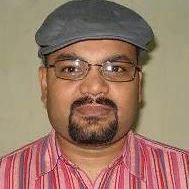
Rabins Porwal
Work place: Department of IT, ITS, Mohan Nagar, Ghaziabad
E-mail: rabinsp@ieee.org
Website:
Research Interests: Image Processing, Image Manipulation, Image Compression, Computer systems and computational processes, Software Creation and Management, Software
Biography
Dr. Rabins Porwal is working as Director at International College of Engineering, Ghaziabad (UP). He completed his PHD and PG from Dayalbagh Dayalbagh Educational Institute, Agra in the year 2005 and 1999 respectively. He has published several research papers in reputed national and international journals. He has guided and is guiding PHD students. His research area includes Software Engg. and Image Processing. He is member of various professional bodies like IEEE, ACM, CSI, ISTE.
Author Articles
Implementing Blind De-convolution with Weights on X-ray Images for Lesser Ringing Effect
DOI: https://doi.org/10.5815/ijigsp.2016.08.05, Pub. Date: 8 Aug. 2016
X-rays and other medical images are distorted because of the limitations of the Imaging system. The other source from where the distortions get in are the transmission channels. The distortions are generally noise and blur. Unless and until the medical images are free of noise and blur they cannot be used by medical professionals to the full extent for diagnosis purpose. Therefore these images must be restored properly before they are used for diagnosis purpose. There are different restoration techniques out of which one is Blind Image Deconvolution. X-ray images restored with this technique have ringing effect in them. Using edgetaper (matlab function) prior to Blind Image Deconvolution reduces the ringing effect to an extent. This paper presents Blind Deconvolution algorithm with weights which gives lesser ringing effect in X-ray images when they are restored.
[...] Read more.Performance Measures of Tele-Protection System Based on Networked Microwave Radio Link
By Jitendra Singh Rabins Porwal S.P.Singh
DOI: https://doi.org/10.5815/ijcnis.2014.05.03, Pub. Date: 8 Apr. 2014
The purpose of paper is to compute reliability of Digital Tele-Protection System employing Digital Microwave Radio Link. In this paper, the whole Tele-Protection system is divided into six subsystems. The first subsystem is digital relaying equipment. Second subsystem is the tale-protection signaling equipment where the timing to sample line power currents is synchronized. Both relaying and Tele-Protection signaling equipments, are now assemble three-phase current data, sampled at 600 Hz for 50 Hz EHV systems and some control data into a 90 bit frame format at a transmission rate of 54 Kb/s. A frame consists of a frame synchronization field and some information fields including a cycle’s redundancy check field. The third subsystem, Tele-Protection signed multiplexing equipment generates a super frame by multiplexing the seven, 54 Kb/s Tele-Protection signals into a 1.544 Mb/s stage using multi-point sampling technique to minimize the delay time variation and send them to the subsystem four, which is radio equipment, from here the data is transmitted with the help of the channel (subsystem 5) to the repeater station (subsystem 6). The subsystem six is used to remove the noise and to improve the power of the data. In this paper, we have taken standby digital relaying equipment and that can be online through an imperfect switching device. Also parallel redundant Tele-Protection signaling equipment is taken to improve system’s overall performance.
[...] Read more.Other Articles
Subscribe to receive issue release notifications and newsletters from MECS Press journals